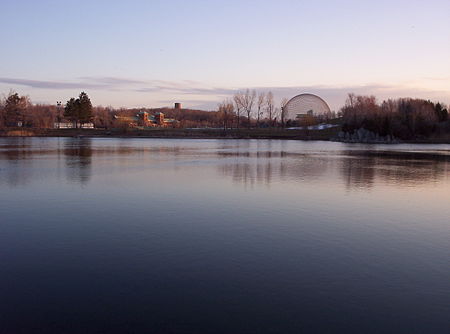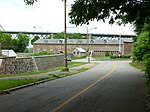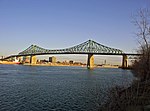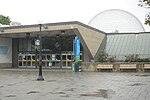Saint Helen's Island

Saint Helen's Island (French: Île Sainte-Hélène) is an island in the Saint Lawrence River, in the territory of the city of Montreal, Quebec, Canada. It forms part of the Hochelaga Archipelago. It is situated immediately offshore from Old Montreal on the southeastern side of the Island of Montreal in southwestern Quebec, and is part of the central borough of Ville-Marie. The Le Moyne Channel separates it from Notre Dame Island. Saint Helen's Island and Notre Dame Island together make up Jean-Drapeau Park (formerly Parc des Îles). It was named in 1611 by Samuel de Champlain in honour of his wife, Hélène de Champlain, née Boullé. The island belonged to the Le Moyne family of Longueuil from 1665 until 1818, when it was purchased by the British government. A fort (Saint Helen Island Fort), powderhouse and blockhouse were built on the island as defences for the city, in consequence of the War of 1812.
Excerpt from the Wikipedia article Saint Helen's Island (License: CC BY-SA 3.0, Authors, Images).Saint Helen's Island
Chemin du Tour-de-l'Isle, Montreal Ville-Marie
Geographical coordinates (GPS) Address Nearby Places Show on map
Geographical coordinates (GPS)
| Latitude | Longitude |
|---|---|
| N 45.517777777778 ° | E -73.533888888889 ° |
Address
Chemin du Tour-de-l'Isle
H3C 6A3 Montreal, Ville-Marie
Quebec, Canada
Open on Google Maps









